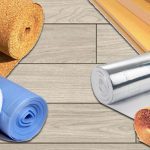In the 21st century, the construction services market offers all kinds of materials used for finishing or repairing bathrooms. Every year, the use of liquid wallpaper is becoming increasingly popular. They are environmentally friendly and easy to use.
Pros and cons of liquid wallpaper in the bathroom.

As with any material, liquid wallpaper has both positive and negative characteristics. The pluses include:
- Increased thermal and sound insulation;
- High strength
- Environmental friendliness;
- Extensive color scheme;
- Numerous application variations;
- Resistance to high humidity;
- Long service life;
- Simple way of drawing;
- Convenience in cleaning the surface;
- Easy to replace;
- Do not absorb odors;
- Damaged areas are easily and quickly replaced.

The disadvantages of using liquid wallpaper include a fairly high cost, as well as the fact that if a person does not have specially acquired skills in applying this material, then for work it is best to turn to a proven to a specialist.

The use of liquid wallpaper will express individuality and demonstrate a sense of style.
Composition of liquid wallpaper
Liquid wallpaper looks like a dry friable mixture, packed in plastic containers. After opening, the contents are diluted with specified volumes of water. After finishing the wall, they become flat.

The composition of liquid wallpaper includes:
- Cotton fiber;
- Silk;
- Cellulose;
- Specialized dyes;
- Fibers of wool and more.

There are currently several types of liquid wallpaper on the market. So you can choose: cellulose, silk, as well as silk - cellulose.

Decorative wallpapers containing silk are UV resistant. They have not changed their original color and appearance for a long time. The other two types are characterized by low cost relative to silk, but their service life will not be so long.
An extensive color range allows you to achieve the most incredible landscapes and patterns on the walls of the bathroom.

How and what to apply liquid wallpaper
For the long service life of this material, it is necessary to correctly apply them. These works can be divided into the following phases:
- Initially, it is necessary to thoroughly primer the walls with a special solution;
- Next, the primer will be fixed with varnish with water-repellent properties;
- The mixture is diluted to the desired consistency, in accordance with the instinct;
- Then the wallpaper is applied directly to the surface itself.
Application can be carried out using: sprayer, roller or gun. In order to achieve the best possible effect, do all the work from a light corner to a darker one. After drying the first layer, you can apply the second. To give the walls a patterned bulge, use a spray gun or a gun.

Using liquid wallpaper, when repairing a bathroom, it is easy to create various themed designs. You can not limit your imagination: the stormy sea, air clouds, rainbow sunsets and much more, will decorate the bathroom and give it special energy.

-
 What crushed stone can be hazardous to health?
What crushed stone can be hazardous to health?
-
 Why is mineral wool dangerous to health?
Why is mineral wool dangerous to health?
-
 Where you can not apply glazing from soft PVC sheets
Where you can not apply glazing from soft PVC sheets
-
 What facade for the house will be the warmest
What facade for the house will be the warmest
-
 What type of sandwich panels is the best
What type of sandwich panels is the best
-
 Why acrylic plaster is better than other coatings
Why acrylic plaster is better than other coatings
-
 What is the optimal thickness of the substrate for the laminate
What is the optimal thickness of the substrate for the laminate
-
 What material is better to replace drywall
What material is better to replace drywall
-
 Characterization and use of glassizol in modern construction
Characterization and use of glassizol in modern construction
-
 What is the lack of wallpaper for painting
What is the lack of wallpaper for painting
-
 Linkrust: characteristics and technology of gluing
Linkrust: characteristics and technology of gluing
-
 Types of balusters and their features
Types of balusters and their features
New publications are published daily on our channel in Yandex. Zen
Go to Yandex. Zen


